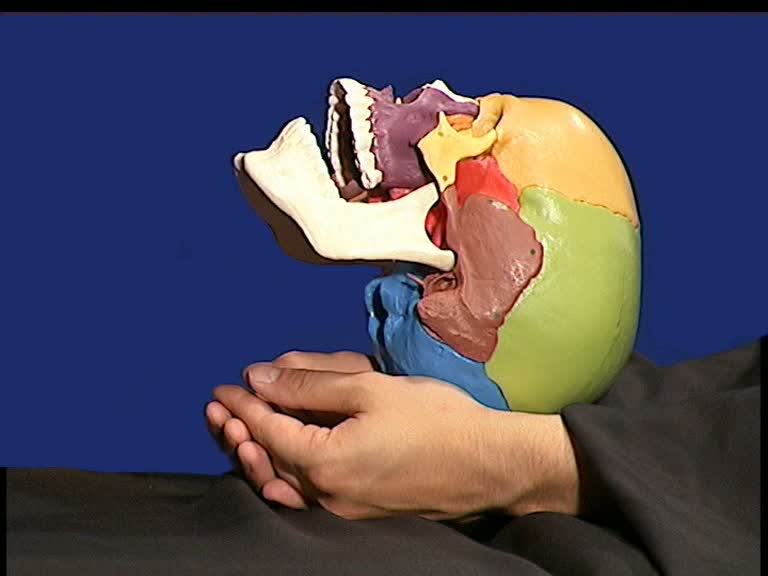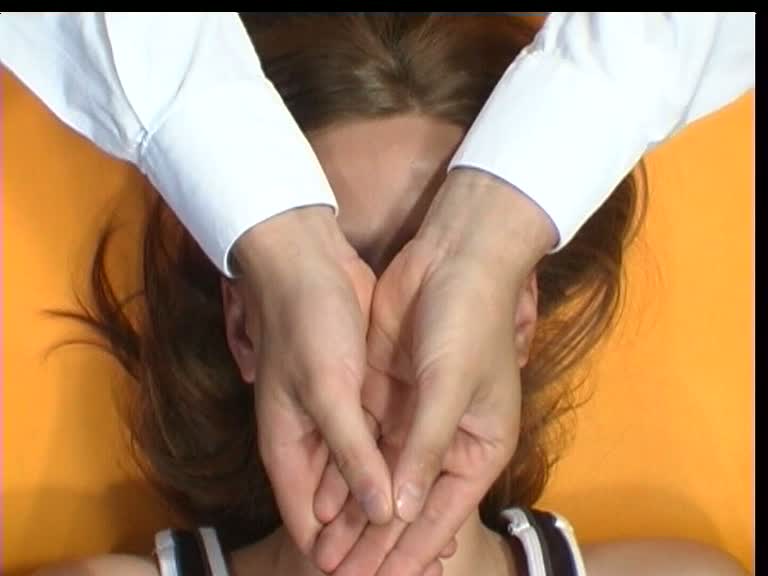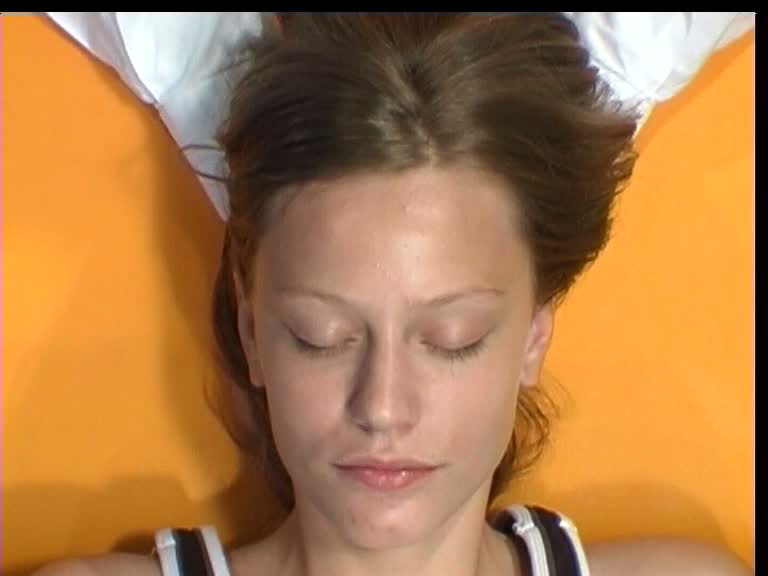In the inspiration phase the thenars prevent the external rotation or the widening of the occipital squama

- The hands are placed into one another in a shell kind of way,
the tips of the thumbs are touching and forming a V.
- The thumbs are pointing distally and are placed at about the level
of the 2nd or 3rd cervical spinous process.
- The thenars are lying medially along the occipital squama. It is
important, that they are not placed over the occipito-mastoid
suture.
 - During the expiration phase the thenars follow the narrowing of the
- During the expiration phase the thenars follow the narrowing of the
occipital squama.
- In the inspiration phase the thenars prevent the external rotation or the
widening of the occipital squama.
- In the next expiration phase the hands follow the occiput further into
internal rotation and resist its widening in the inspiration phase
- This procedure is repeated until external rotation/internal rotation have
come to a standstill: a stillpoint
- The hands follow the micro-movements that might appear from the neck muscles.
 - A deeper breathing, a slight sweat on the forehead and a
- A deeper breathing, a slight sweat on the forehead and a
reduced muscle tone can take place at a successful
stillpoint
At the end of the stillpoint one feels a strong, even pressure at the occipital bone towards external rotation. The therapist follows this impulse passively and focuses his attention on the quality of the rhythm.








